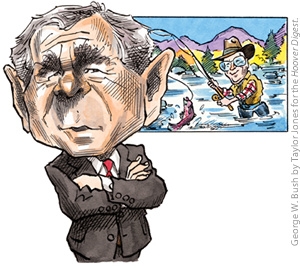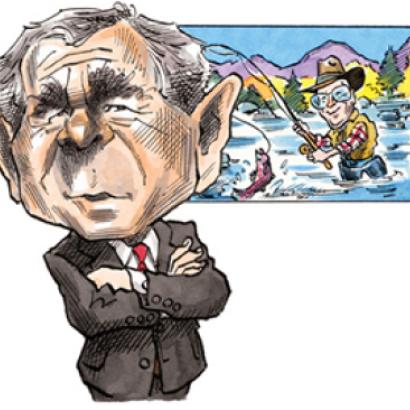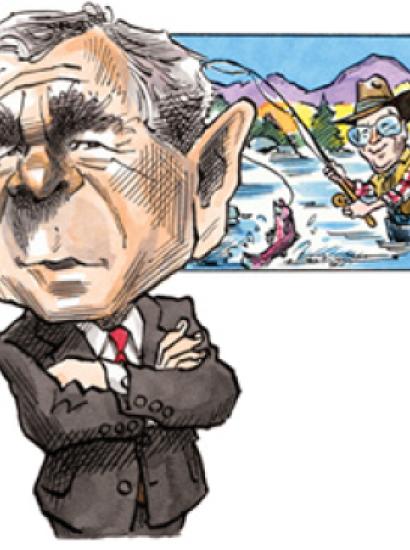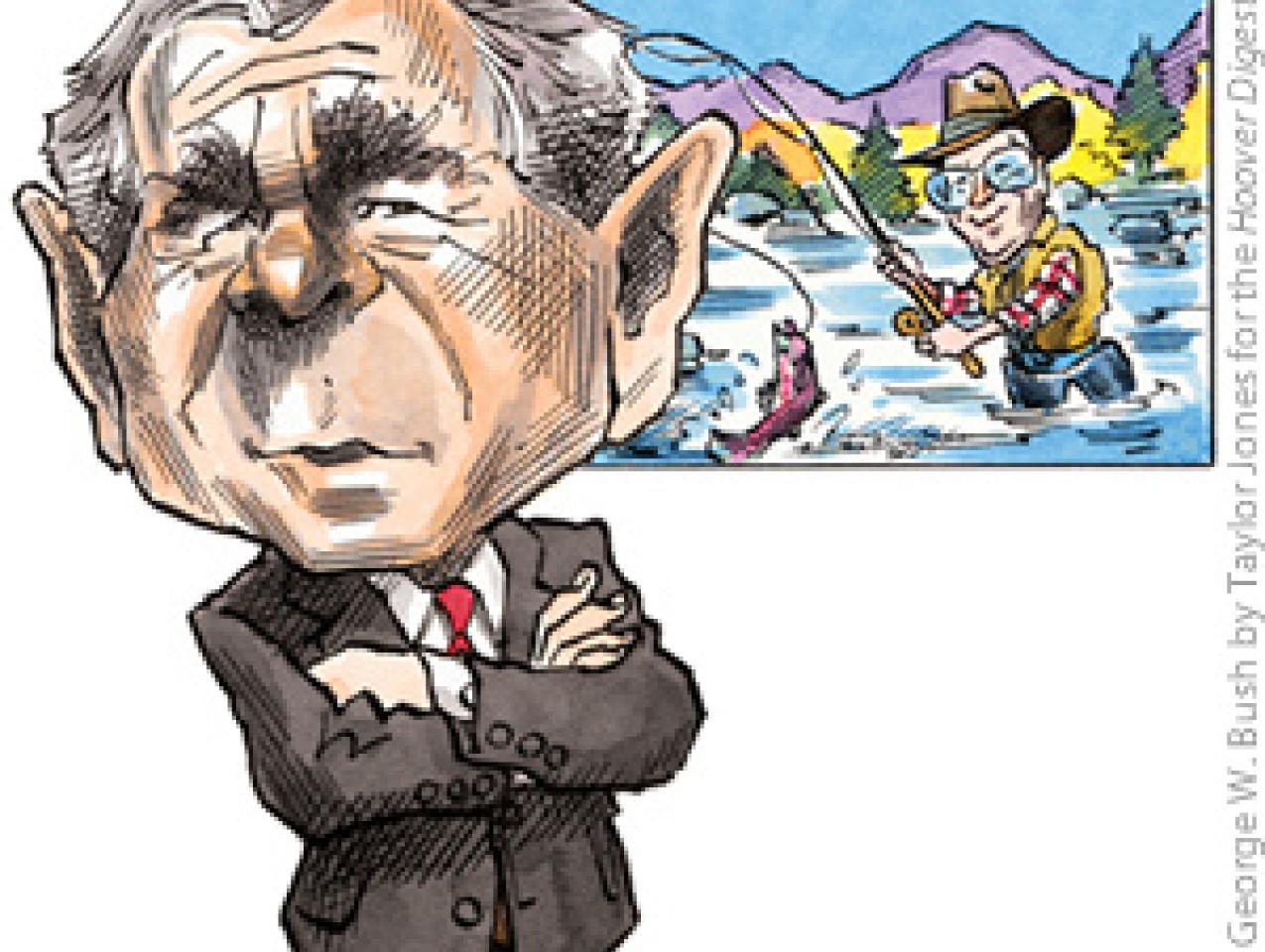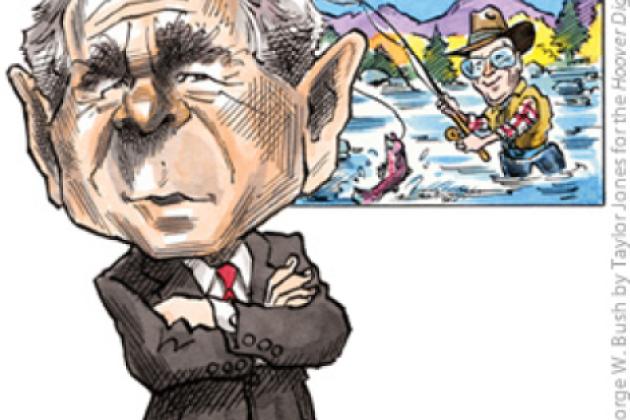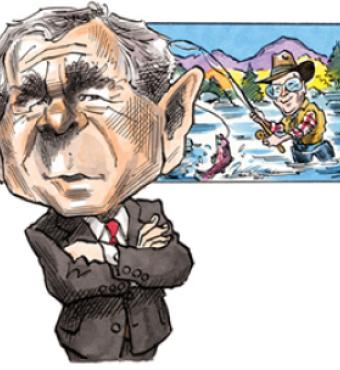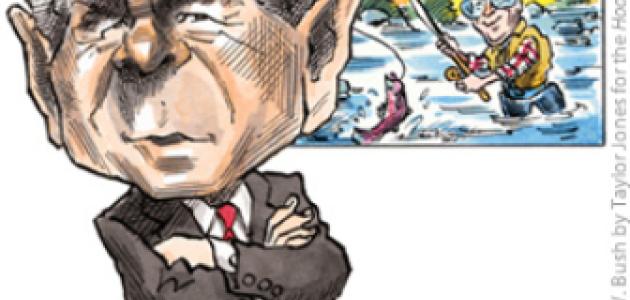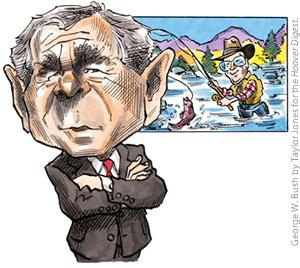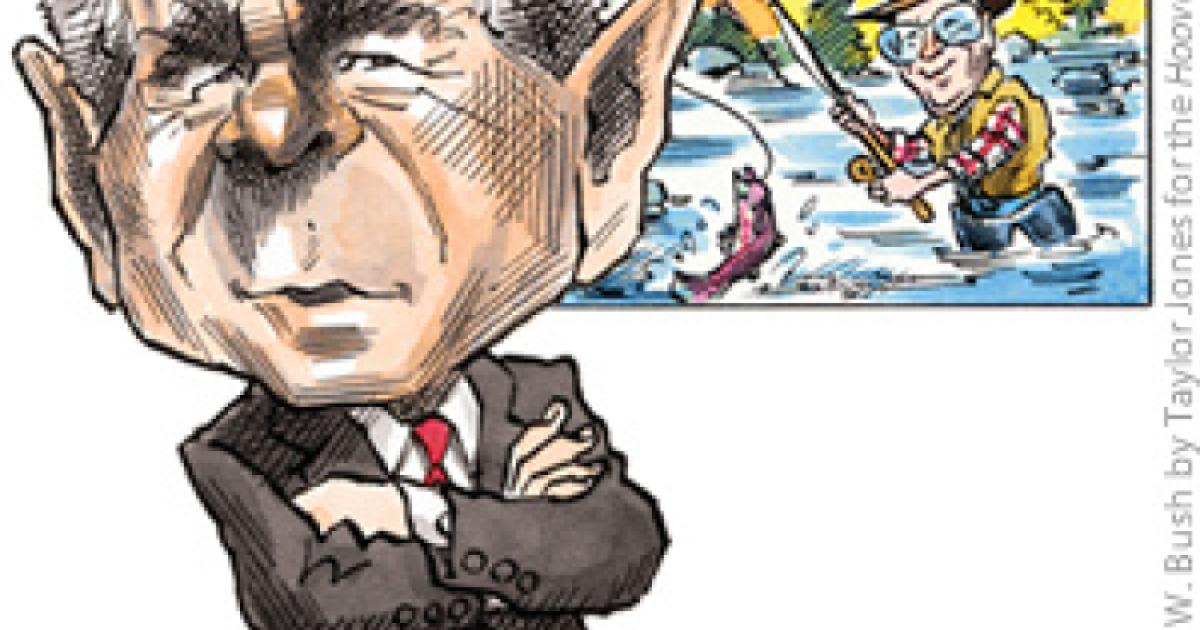- Energy & Environment
- The Presidency
- Politics, Institutions, and Public Opinion
“Montana, Idaho to Have More Say in Wolf Management” read the headline on January 4, 2005, in a local Montana newspaper. The article announced the Bush administration’s decision to give the two states more authority over controlling wolf populations that have exploded since their reintroduction in Yellowstone Park in 1995. From fewer than 20 wolves, there are now more than 400 in the Yellowstone region and more than 700 in Montana and Idaho. The decision to give more authority for wolf management to states follows one giving western governors more say over the management of 58 million acres of federal land designated as roadless by the Clinton administration.
Is the Bush administration beginning to dismantle the top-down environmental regulatory regime built up in Washington, D.C., since the early 1970s?
The first two years of the Bush administration did not offer much hope that the answer was yes. PERC (the Property and Environment Research Center) issued an environmental report card grading the administration’s environmental policies based on the criteria of “free market environmentalism” (a way of addressing environmental problems that recognizes the importance of incentives, of devolving policies to the lowest effective governmental level, and of harnessing markets to improve environmental quality). Based on these criteria, the first report card gave the administration an overall grade of C– because it had mainly continued using “command-and-control environmentalism.”
A second report card just before Bush’s reelection increased the grade to C+. The improvement came from the administration’s water-quality management program, which establishes standards for stream quality but allows trading among polluters to achieve lower costs in meeting the standards. The program is patterned after a similar one in North Carolina’s Tar-Pimlico Sound. There, municipalities and industries, which cannot reduce emissions without tremendous costs, can offset the cost for hog farmers of reducing discharges and bring water quality into compliance with EPA standards at much lower costs. Bush’s water-quality trading program will allow similar improvements for streams in the Midwest, where confined animal feeding operations can reduce discharges at far lower cost than point sources such as municipalities and industries. The administration also gets high marks for reforming the regulatory review process, especially as it applies to electrical generating plants that can be fitted with new, less-polluting technologies. In the past, such fitting required a “new source review” that was so costly that companies simply chose to stay with older, dirtier technologies. Under the Bush reforms, the review is much simpler, with the result being cleaner air at a lower cost.
The administration can further improve its environmental grade by applying free market environmentalism. More can be done to encourage markets to allocate the West’s scarce water. More can be done to devolve federal land management to local levels and to allow market forces to determine how the land is used. For example, a simple step would be to allow ranchers to rent or sell their grazing permits to environmental groups wanting to reduce grazing on federal lands. More can be done to encourage tradable fishing rights for coastal fisheries. By allocating a share of a sustainable harvest to fishers, such tradable fishing rights give fishers an incentive to husband fish stocks, many of which are in serious decline.
Bush’s second term seems to be off to a good start with Secretary of Interior Gale Norton’s announcement that wolf management would be devolved to the states. It remains to be seen who will head EPA; whoever it is will have to fight a well-entrenched bureaucracy if he or she wishes to promote free market environmentalism. If President Bush can make these types of changes, he will leave office having reduced the regulatory burden on the economy and having improved environmental quality.
